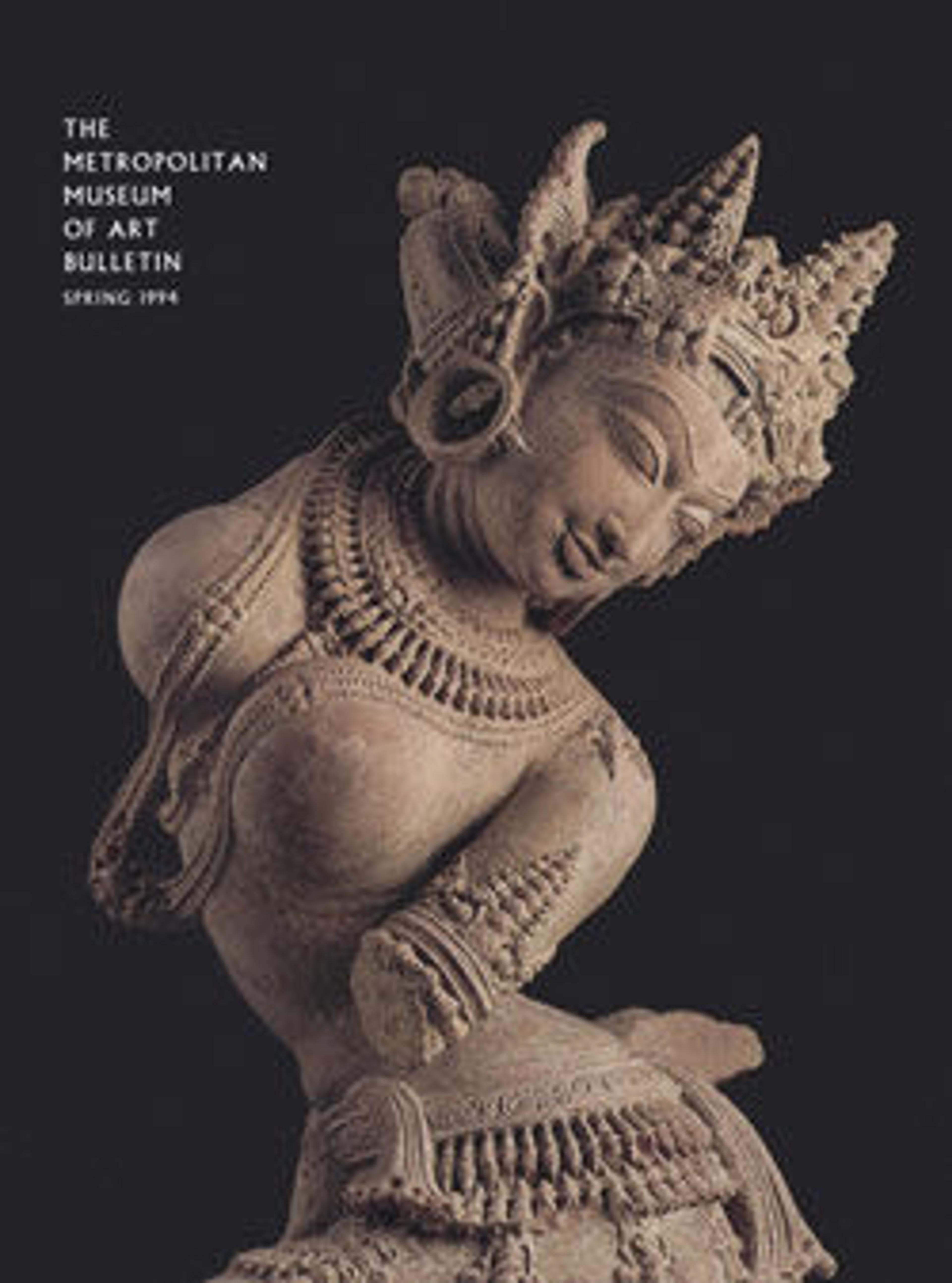The Gift of Anathapindada
The identification of the subject of this relief as the Gift of Anathapindada is by no means certain. The presence at the far left of the figure holding a waterpot suggests that a gift is about to be made, as a donor traditionally poured water over the hands of a recipient to seal a gift. However, determining the overall meaning depends on identification of the objects in the bowl being proffered to the Buddha. Sudatta, called Anathapindada (the Incomparable Almsgiver), was the richest merchant of the town of Sravasti (in Kosala). He met the Buddha at Rajagriha and proposed to donate money in order to buy land for a monastery in Sravasti. The amount of the payment exacted from Anathapindada was calculated by covering the grounds of the park to be purchased with gold coins. The identification of the objects in the bowl as coins is speculative, and the precise scene in the life of the Buddha that is represented is therefore unclear.
Artwork Details
- Title:The Gift of Anathapindada
- Period:Kushan period
- Date:2nd–3rd century
- Culture:Pakistan (ancient region of Gandhara)
- Medium:Schist with traces of gold foil
- Dimensions:H. 9 5/8 in. (24.4 cm); W. 8 7/8 in. (22.5 cm); D. 1 1/2 in. (3.8 cm)
- Classification:Sculpture
- Credit Line:Samuel Eilenberg Collection, Gift of Samuel Eilenberg, 1987
- Object Number:1987.142.1
- Curatorial Department: Asian Art
More Artwork
Research Resources
The Met provides unparalleled resources for research and welcomes an international community of students and scholars. The Met's Open Access API is where creators and researchers can connect to the The Met collection. Open Access data and public domain images are available for unrestricted commercial and noncommercial use without permission or fee.
To request images under copyright and other restrictions, please use this Image Request form.
Feedback
We continue to research and examine historical and cultural context for objects in The Met collection. If you have comments or questions about this object record, please contact us using the form below. The Museum looks forward to receiving your comments.
